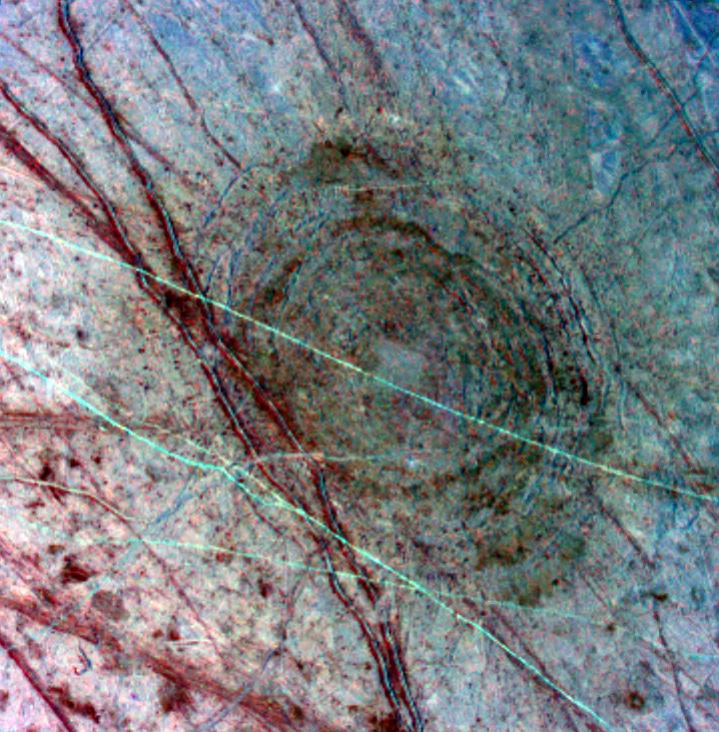This Week’s Finds in Mathematical Physics (Week 265)
Posted by John Baez
In week265 of This Week’s Finds, see Europa, the icy moon of Jupiter:

Then read about the Pythagorean pentagram, Bill Schmitt’s work on Hopf algebras in combinatorics, the magnum opus of Aguiar and Mahajan, and quaternionic analysis!
Here’s a nice picture of the cracked icy surface of Europa:

The red stuff in this false color image could be ice containing more salts — maybe magnesium sulfate — or maybe ice mixed with sulfuric acid.
I may give up listing questions raised by writing This Week’s Finds, since nobody seems to answer them! Still:
- What’s the red stuff in the picture above? Nobody knows, apparently, but why do folks seem to feel sure it involves sulfur? What’s up with all this sulfur? Why is there so much sulfur on Io? Is it related?
- People seem to say the ‘true polar wander’ in Europa is evidence for an ice sheet floating on an ocean, but there’s also true polar wander on Mars. What’s up? Is it just the enormous amount of polar wander on Europa that suggests a floating ice sheet?
- What textual evidence is there concerning the Pythagoreans? The silly stories of Diogenes Laertius surely can’t be trusted too far. There’s a bit in Aristotle’s Physics. But this business about Pythagoreans and pentagrams — while it’s discussed quite extensively on Wikipedia, there are no references, and a lot concerns “medieval neoPythagoreans”. I want to know what we really know about the Greek Pythagoreans, and how we know it.
- What’s going on with the big table of variant binomial coefficients on the first page of Aguiar’s paper Braids, q-binomials and quantum groups? It looks like one of those mystical Rosetta stones linking diverse subjects… I love those.
- Precisely how are Aguiar and Mahajan’s -monoidal categories related to the -fold monoidal categories of Fiederowicz, Forcey and others? Do they still give -fold loop spaces? How do the combinatorial examples of -monoidal categories work?
- How are Aguiar and Mahajan’s Fock space constructions related to the categorified and -deformed Fock spaces that I like? How is their work on Coxeter groups related to the groupoidified Hecke algebras that Todd, Jim and I are studying? I note that they mention positive braids.
- Why do Frenkel and Libine say the quaternionic analogue of the Cauchy–Riemann equations is like Maxwell’s equations, when it so visibly resembles the Dirac equations?







Re: This Week’s Finds in Mathematical Physics (Week 265)
You say each pentagram is 1/phi times as big as the one before. Do you mean that each pentagram is 1/phi^2 times as big, or that it’s lines are 1/phi times as big, instead of the area being 1/phi times as big?